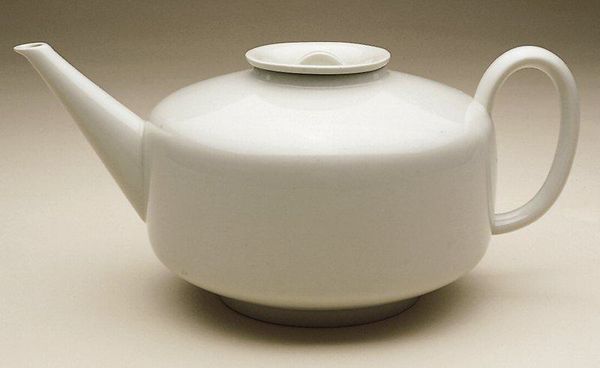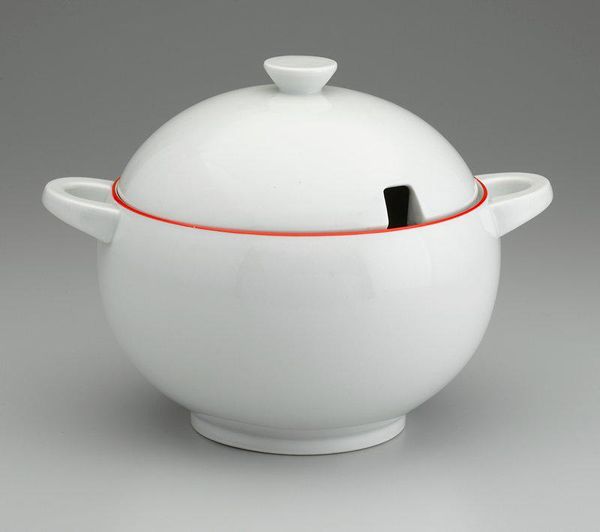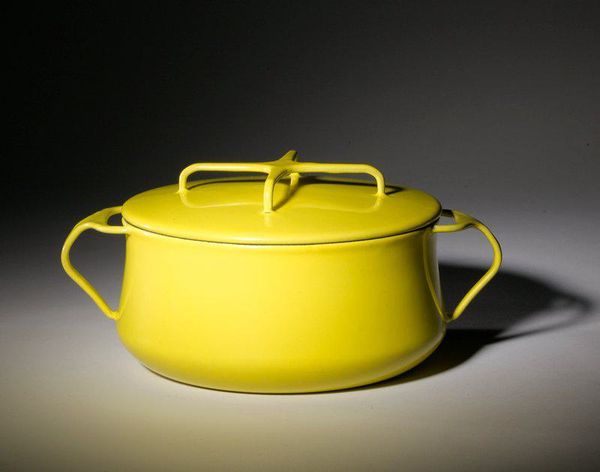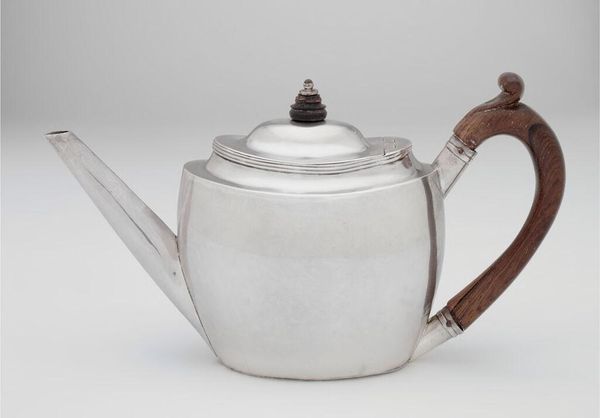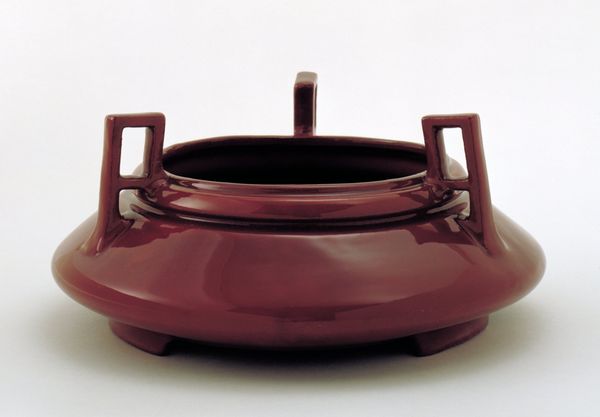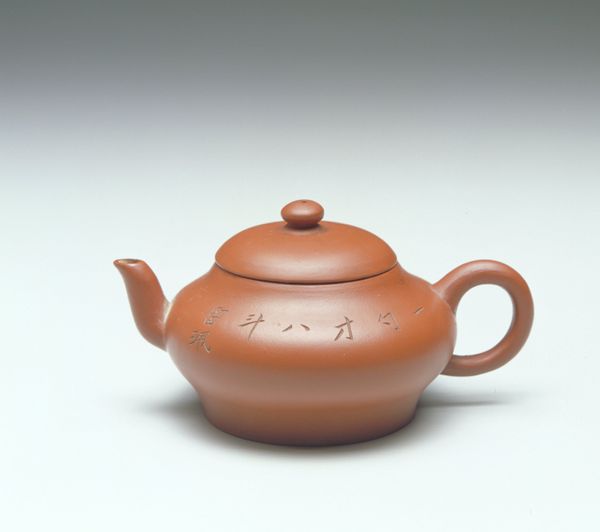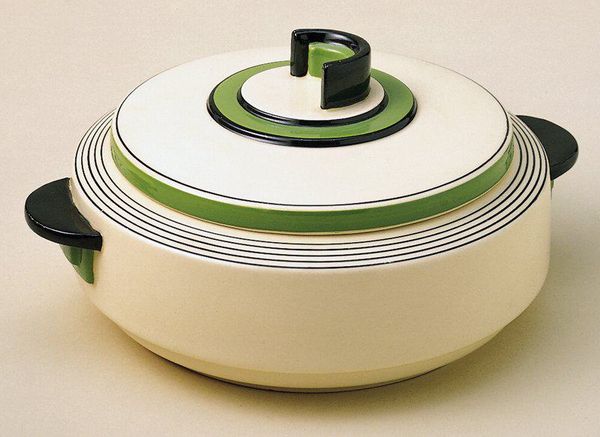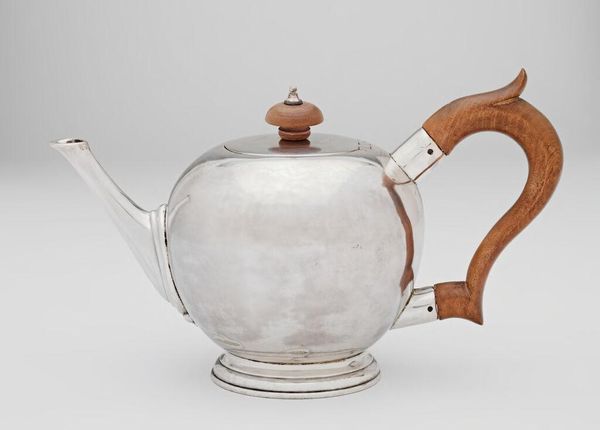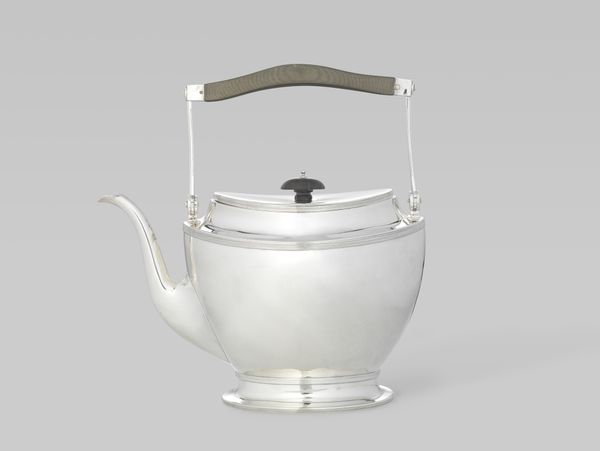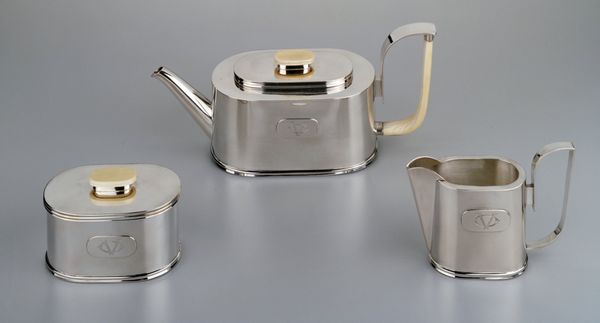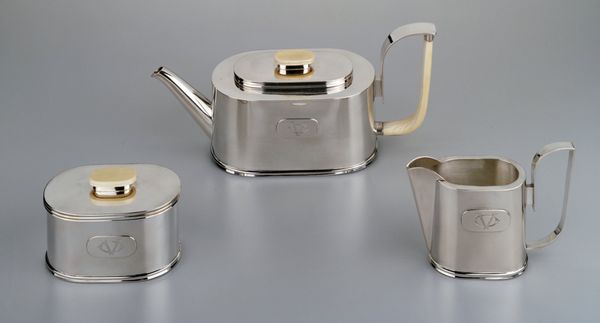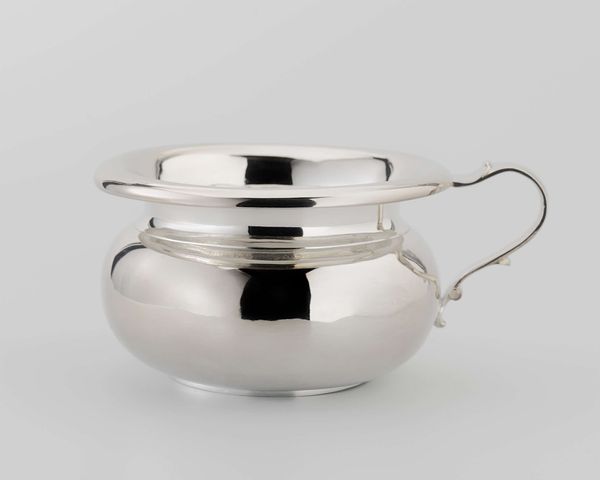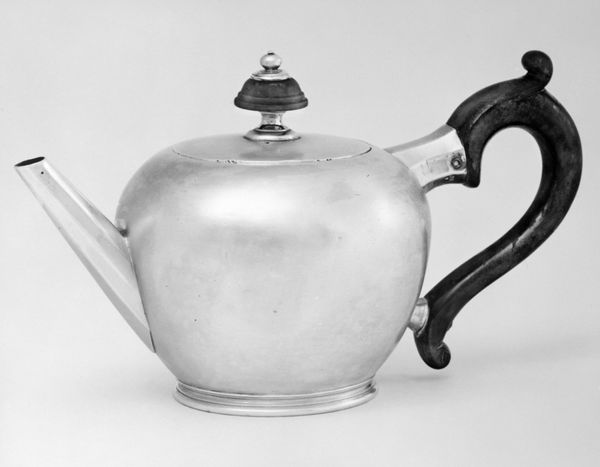
ceramic, earthenware
#
ceramic
#
earthenware
#
united-states
#
decorative-art
Copyright: No Known Copyright
Curator: Here we have "Teapot with Cover," an earthenware ceramic piece from the 20th century, attributed to Fraunfelter China. Editor: Wow, it's got a surprisingly playful air about it, almost cartoonish! That vivid orange screams vintage Americana, doesn't it? Curator: Absolutely. I see the high-contrast design of this earthenware teapot not as frivolous, but reflective of post-war consumer culture, of design principles shaped by mass production. We should consider what kind of table this sat on, the architecture of the home it lived in. Editor: Oh, I am seeing it now! Like a little porcelain locomotive chugging along the table! Curator: Exactly! Think of the industrial processes required to achieve those smooth planes. Fraunfelter isn’t just producing a functional object; they're streamlining a complex process. Look at how the handle is molded almost separate from the body. This demonstrates a mastery over casting and firing that speaks volumes about their workshop. Editor: And there's something inherently hopeful about it! The geometric shapes, the confident lines - it feels like it belongs in a Jetsons episode where even the tea sets had that go-getter can-do attitude of postwar America! Curator: The form isn’t purely aesthetic either; earthenware teapots can’t sustain prolonged high temperatures, unlike porcelain. The materiality inherently dictated certain design decisions regarding both shape and ornamentation. Editor: Thinking of materiality makes me imagine hands on a pottery wheel, or rather in a mold—rows and rows of them churning out these hopeful little teapots for eager new homeowners! Did this object carry status? Was it purely utilitarian? Curator: Status, utilitarian function—these aspects become blurred when objects like this reach mass markets. They are simultaneously a practical tool and a signifier. Think about who was working in factories like Fraunfelter. How were they being compensated? Consumption is always embedded in systems of labor, of power. Editor: Right. And those systems poured that energy and that ingenuity into every clean line. I'm taking a second look now at the orange and the crisp white—and sensing ambition! Curator: So, through its design and mass production, we begin to unravel a story far richer than mere surface appeal. Editor: It went from whimsical to weighty, and then finally, just timelessly… American.
Comments
No comments
Be the first to comment and join the conversation on the ultimate creative platform.
